
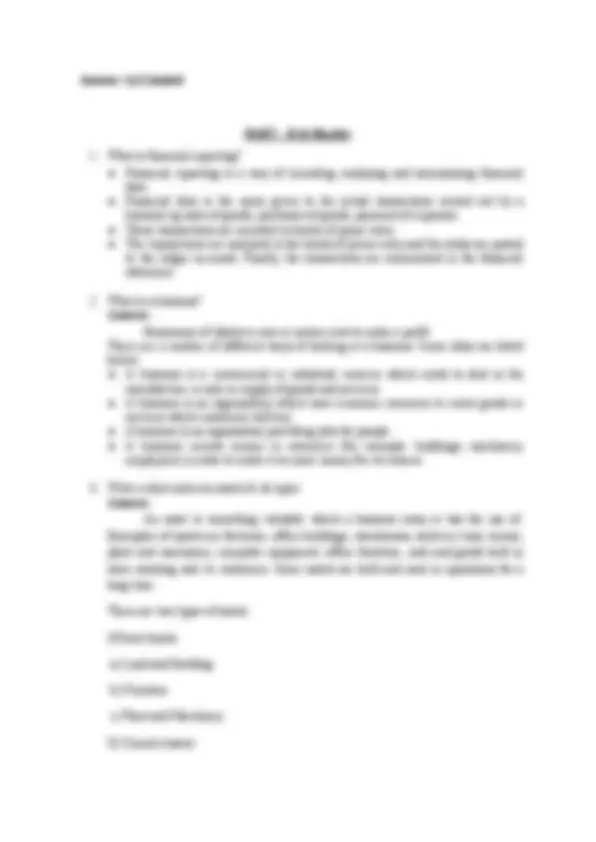
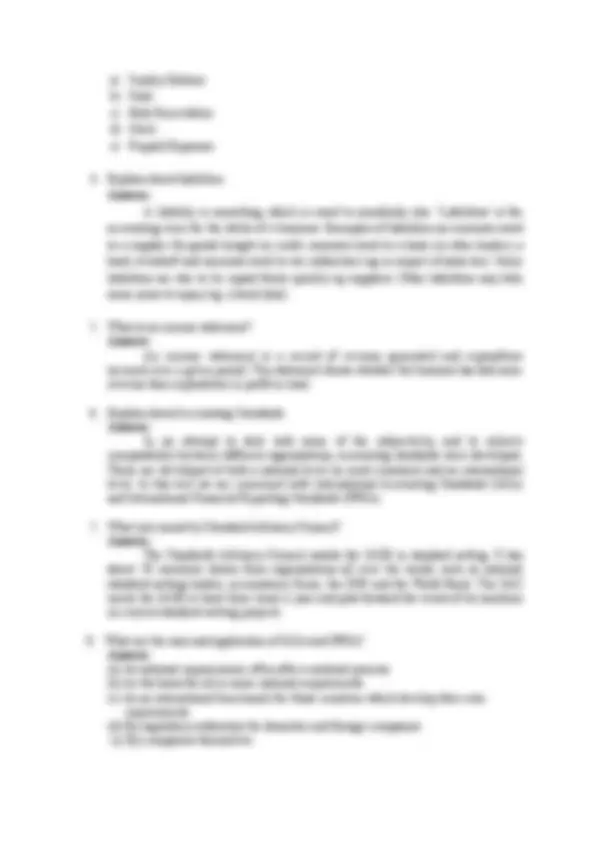
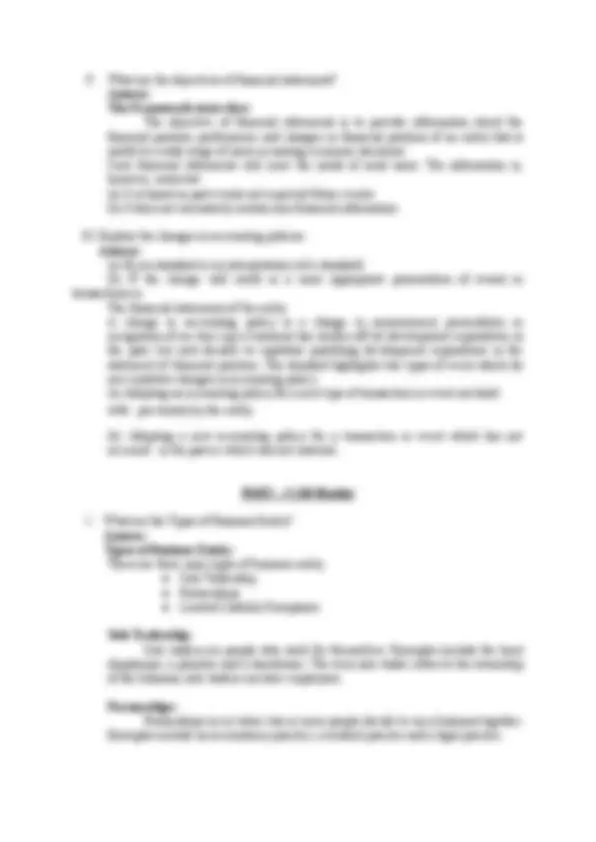
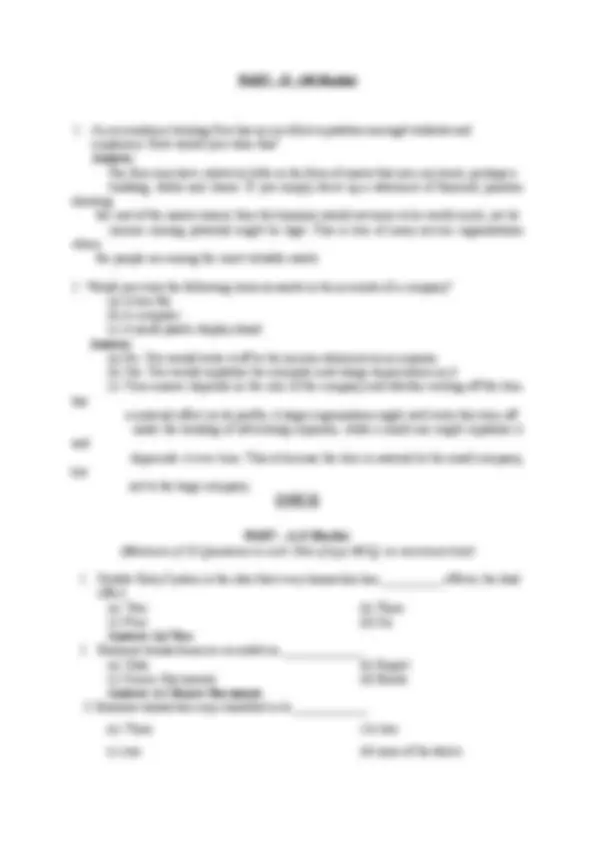
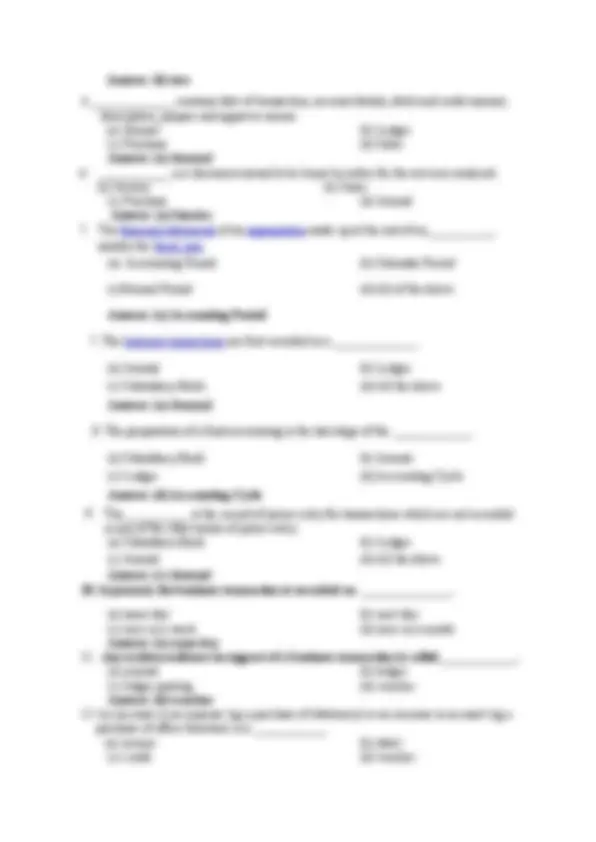
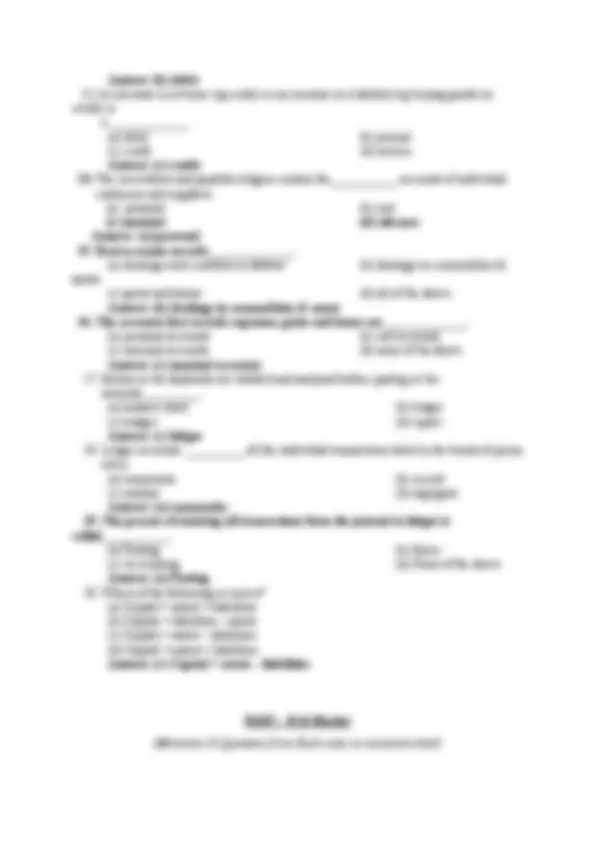
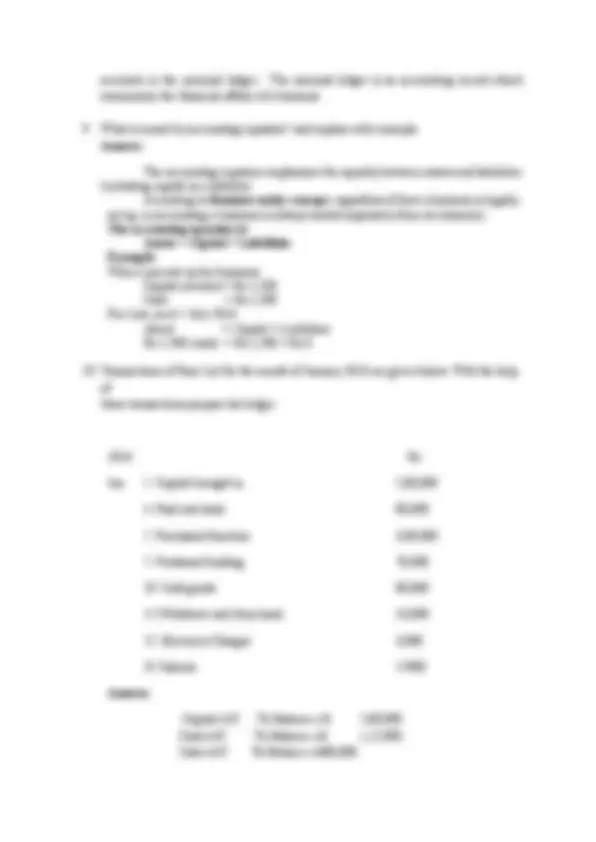
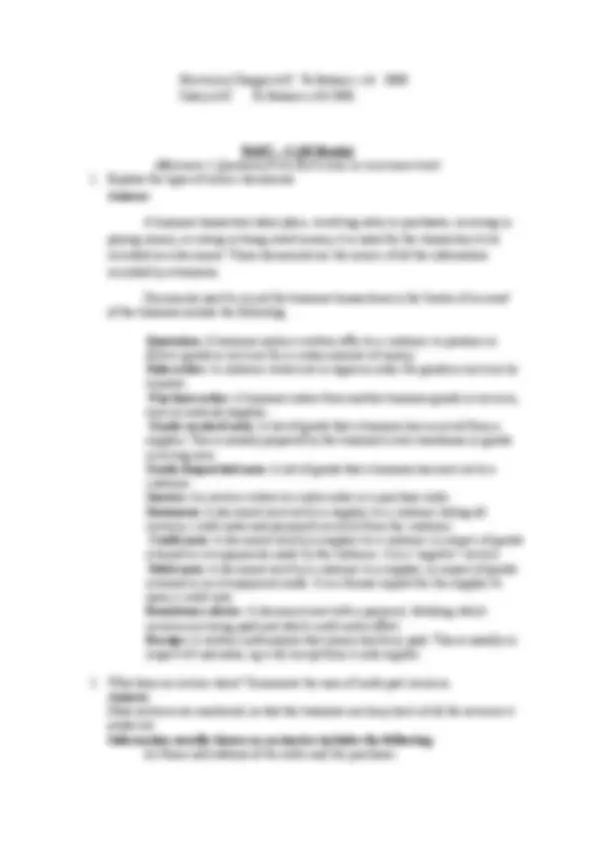
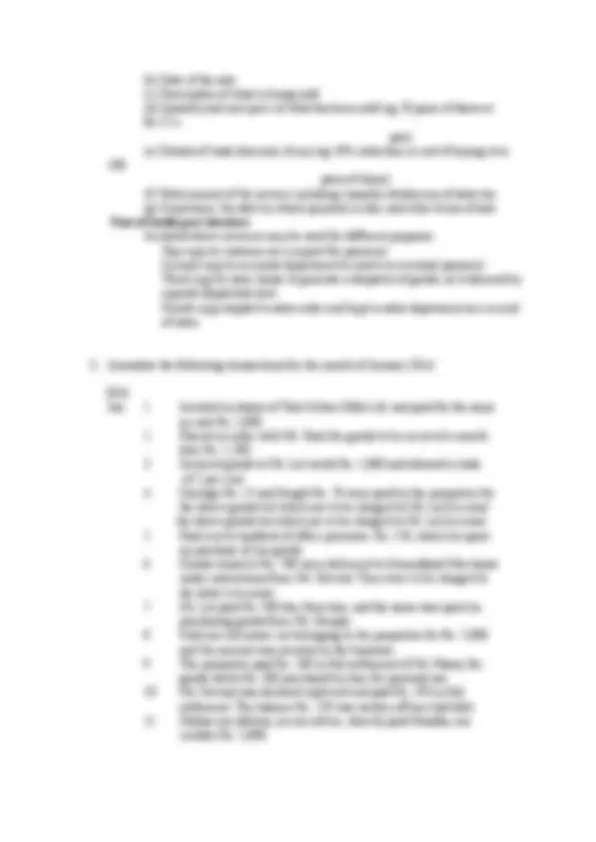
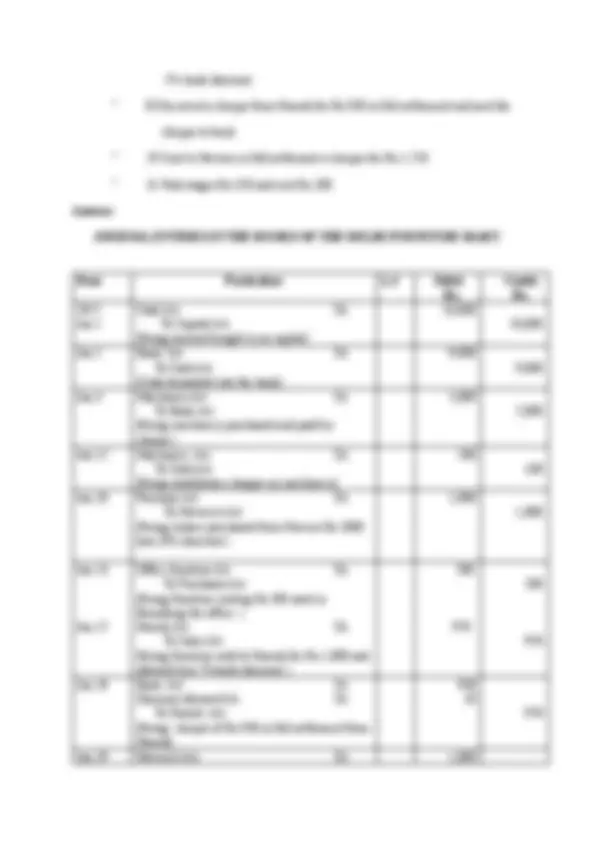
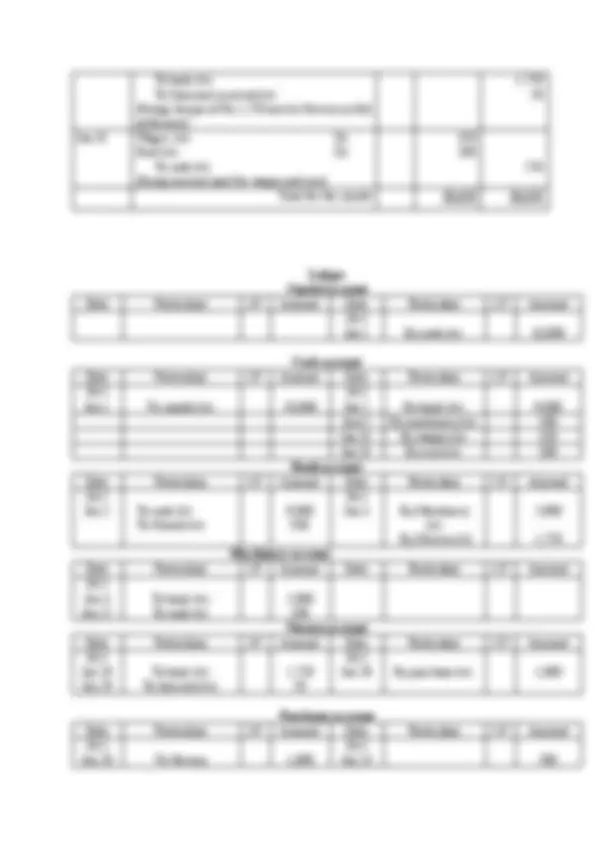
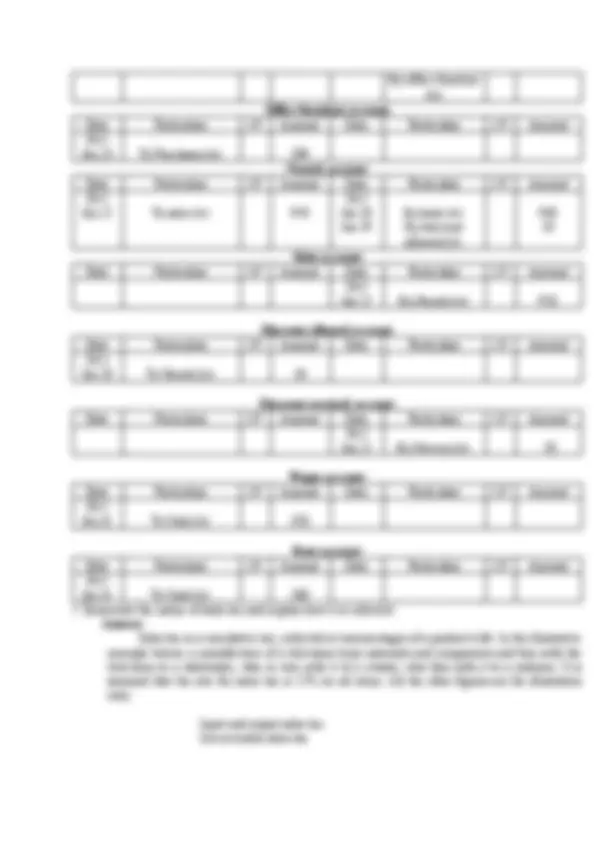
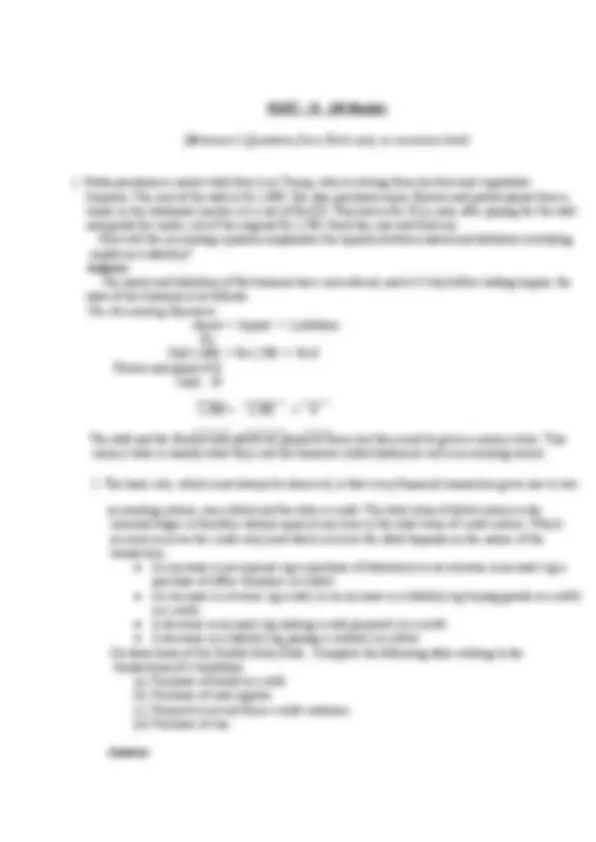
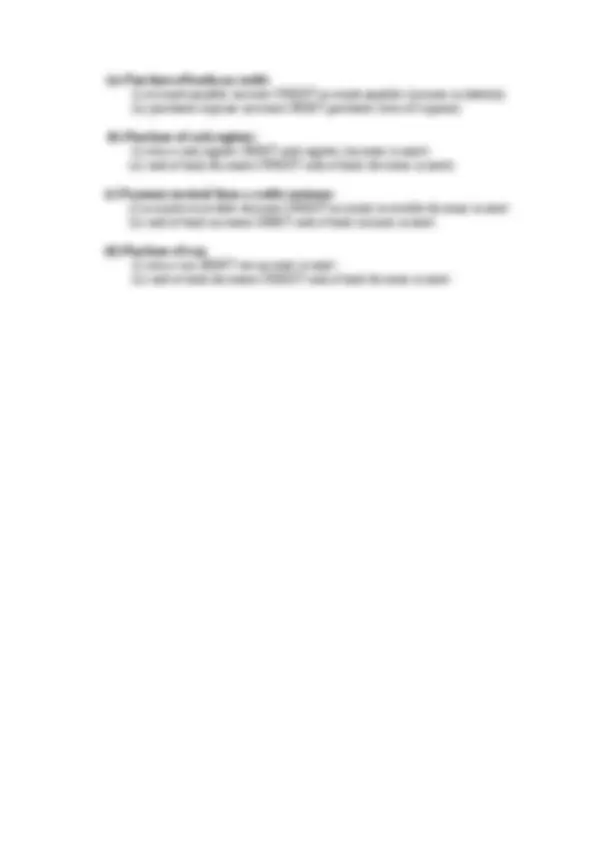


Study with the several resources on Docsity

Earn points by helping other students or get them with a premium plan


Prepare for your exams
Study with the several resources on Docsity

Earn points to download
Earn points by helping other students or get them with a premium plan
Community
Ask the community for help and clear up your study doubts
Discover the best universities in your country according to Docsity users
Free resources
Download our free guides on studying techniques, anxiety management strategies, and thesis advice from Docsity tutors
Question and answers for Financial Accounting. It includes all types of financial questions with answers. It's useful for Finance Students and Staffs.
Typology: Exams
1 / 22

This page cannot be seen from the preview
Don't miss anything!















PART – A (1 Marks)
(a) Inventory (b) Receivables (c) Plant and machinery (d) Loan Answer: (d) Loan
a) Sundry Debtors b) Cash c) Bills Receivables d) Stock e) Prepaid Expenses.
The preparation of these statements is the responsibility of the board of directors. IAS 1 also encourages a financial review by management and the production of any other reports and statements which may aid users.
4. How Financial Statements fulfil the User’s and Stakeholders’ needs? Mention who are the entire users’ of Financial Statements and Accounting Information? Answer: The objective of financial statements is to provide information about the financial position, performance and changes in financial position of an entity that is useful to a wide range of users in making economic decisions. The Users’ of Financial Statements and Accounting Information: The following people are likely to be interested in financial information about a large company with listed shares. (a) Managers of the company (b) Shareholders of the company (c) Trade contacts (d) Providers of finance to the company (e) The taxation authorities (f) Employees of the company (g) Financial analysts and advisers (h) Government and their agencies (i) The Publis. Accounting information is summarised in financial statements to satisfy the information needs of these different groups. Not all will be equally satisfied.
PART – D (10 Marks)
Answer: (b) debit
accounts in the nominal ledger. The nominal ledger is an accounting record which summarises the financial affairs of a business.
� Electricity Charges A/C :To Balance c/d 3000 � Salary A/C To Balance c/d15000. PART – C (10 Marks) (Minimum 5 Questions from Each unit, no maximum limit)
Answer: JOURNAL ENTRIES Debit Credit Date Particulars L.F. Rs. Rs. 2006 Jan. 1 Investment Account Dr. 2, To Cash Account 2, (Being purchase of shares of Tata Cotton Mills Ltd. paid in cash) 2 No entry is passed as “placing of an order is not a business transaction.” 3 Mr. Lal’s Account Dr. 980 To Sales Account 980 (Being the entry for credit sale of goods to Mr. Lal at a trade discount of 2%) 4 Mr. Lal’s Account Dr. 95 To Cash Account 95 (Being payment of freight and carriage on behalf of Mr. Lal) 5 Rent Account Dr. 150 To Sales Account 150 (Being rent paid to the landlord in the form of goods, instead of in cash) 6 Mr. Govind Account Dr. 700 To Sales account 700 (Being goods sold to Mr. Govind but delivered to A. Merchants as per instructions) 7 Cash Account Dr. 500 To Lal’s Account 500 (Being in amount received in cash from Lal) 7 Purchases Account Dr. 500 To Cash Account 500 (Being entry for goods purchased from Mr. Deepak from in cash received from Lal) 8 Cash Account Dr. 5, To Proprietor’s Capital Account 5,
(Being amount invested in business out of the sale process of the owner’s personal car) 9 Proprietor’s Capital Account /Drawing A/c Dr. 180 To Cash Account 180 (Being the amount paid to Manoj for goods purchased for his personal use) 10 Cash Account Dr. 450 Bad Debts Account Dr. 250 To Govind’s Account 700 (Being the amount received from Govind in full settlement of his debts) 11 Nandha Dr. 2, To Mohan 2, (Being cash paid by Mohan to Naveen)
To bank A/c To Discount received A/c (Being cheque of Rs.1,750 sent to Naveen in full settlement)
Jan 31 Wages A/c Dr. Rent A/c Dr. To cash A/c (Being amount paid for wages and rent)
Total for the month 30,650 30, Ledger Capital account Date Particulars J.F Amount Date Particulars J.F Amount 2015 Jan 1 By cash A/c 10, Cash account Date Particulars J.F Amount Date Particulars J.F Amount 2015 Jan.1 To capital A/c 10,
Jan 2 By bank A/c 9, Jan15 By machinery A/c 100 Jan 31 By wages A/c 350 Jan 31 By rent A/c 200 Bank account Date Particulars J.F Amount Date Particulars J.F Amount 2015 Jan.2 To cash A/c To Naresh A/c
Jan.3 By Machinery A/c By Naveen A/c
Machinery account Date Particulars J.F Amount Date Particulars J.F Amount 2015 Jan. Jan. To bank A/c To cash A/c
Naveen account Date Particulars J.F Amount Date Particulars J.F Amount 2015 Jan. Jan. To bank A/c To discount A/c
Jan 20 By purchase A/c 1, Purchases account Date Particulars J.F Amount Date Particulars J.F Amount 2015 Jan.20 To Naveen 1,
Jan 23 500
By office furniture A/c Office furniture account Date Particulars J.F Amount Date Particulars J.F Amount 2015 Jan.23 To Purchases A/c 500 Naresh account Date Particulars J.F Amount Date Particulars J.F Amount 2015 Jan.25 To sales A/c 950
Jan 28 Jan. By bank A/c By discount allowed A/c
Sales account Date Particulars J.F Amount Date Particulars J.F Amount 2015 Jan 25 By Naresh A/c 950 Discount allowed account Date Particulars J.F Amount Date Particulars J.F Amount 2015 Jan.20 To Naresh A/c 20 Discount received account Date Particulars J.F Amount Date Particulars J.F Amount 2015 Jan 25 By Naveen A/c 50 Wages account Date Particulars J.F Amount Date Particulars J.F Amount 2015 Jan.31 To Cash A/c 350 Rent account Date Particulars J.F Amount Date Particulars J.F Amount 2015 Jan.31 To Cash A/c 200